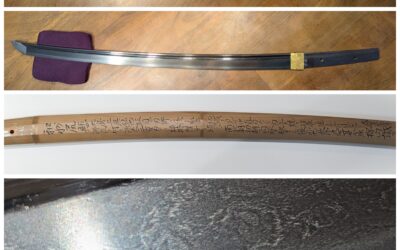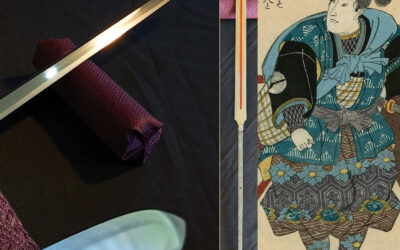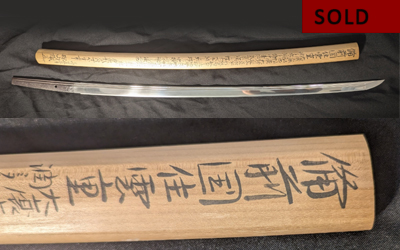
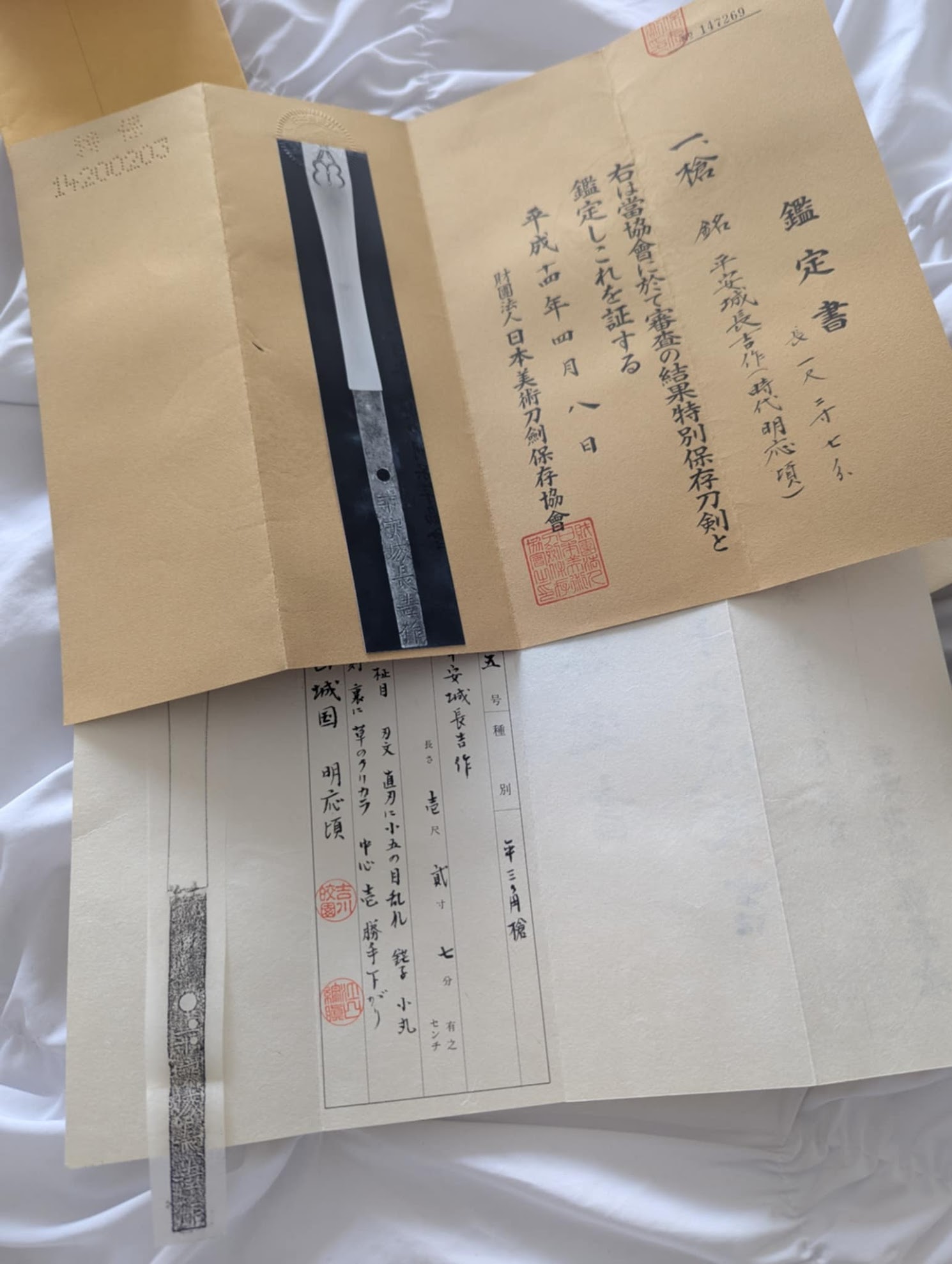

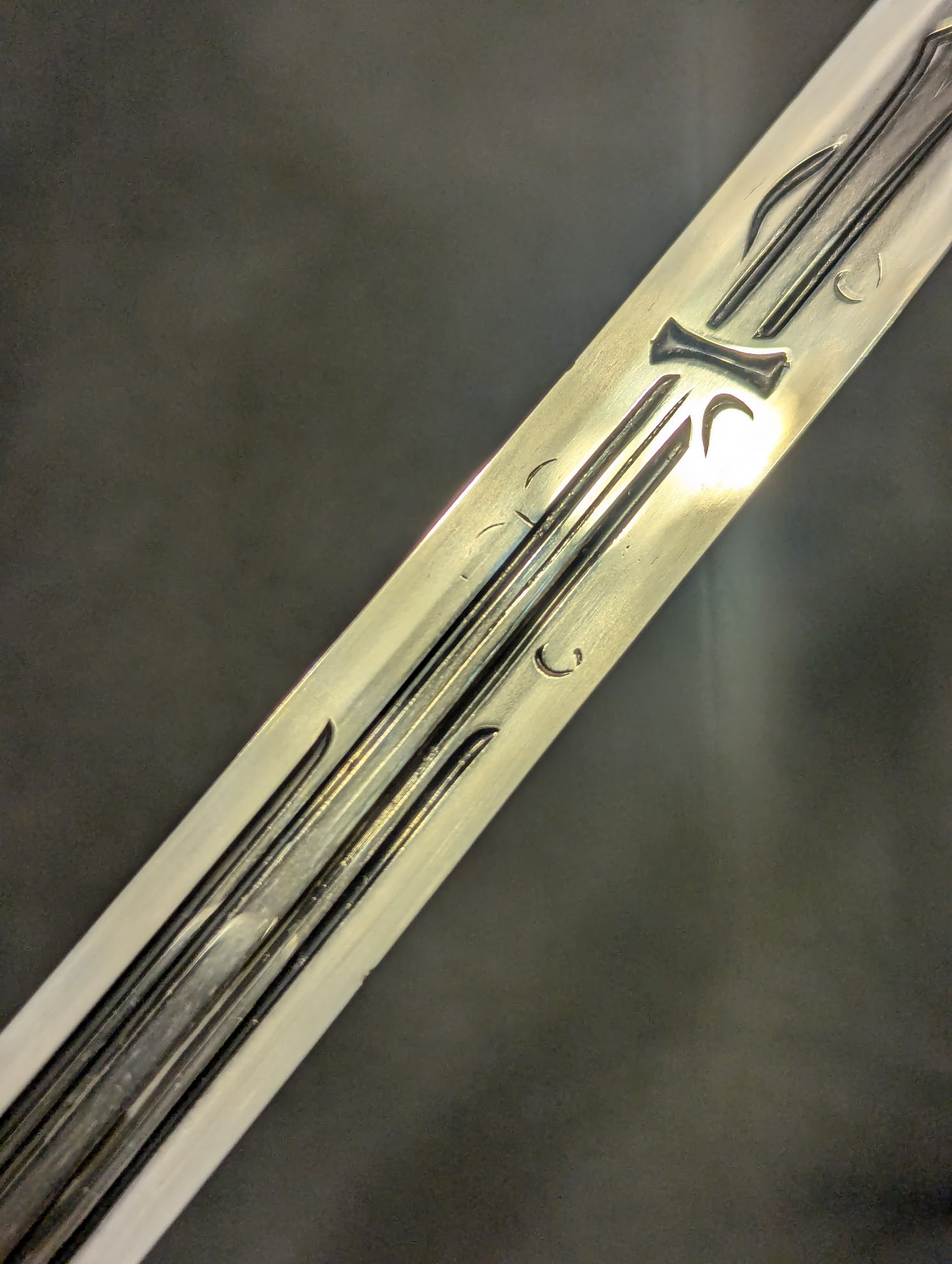
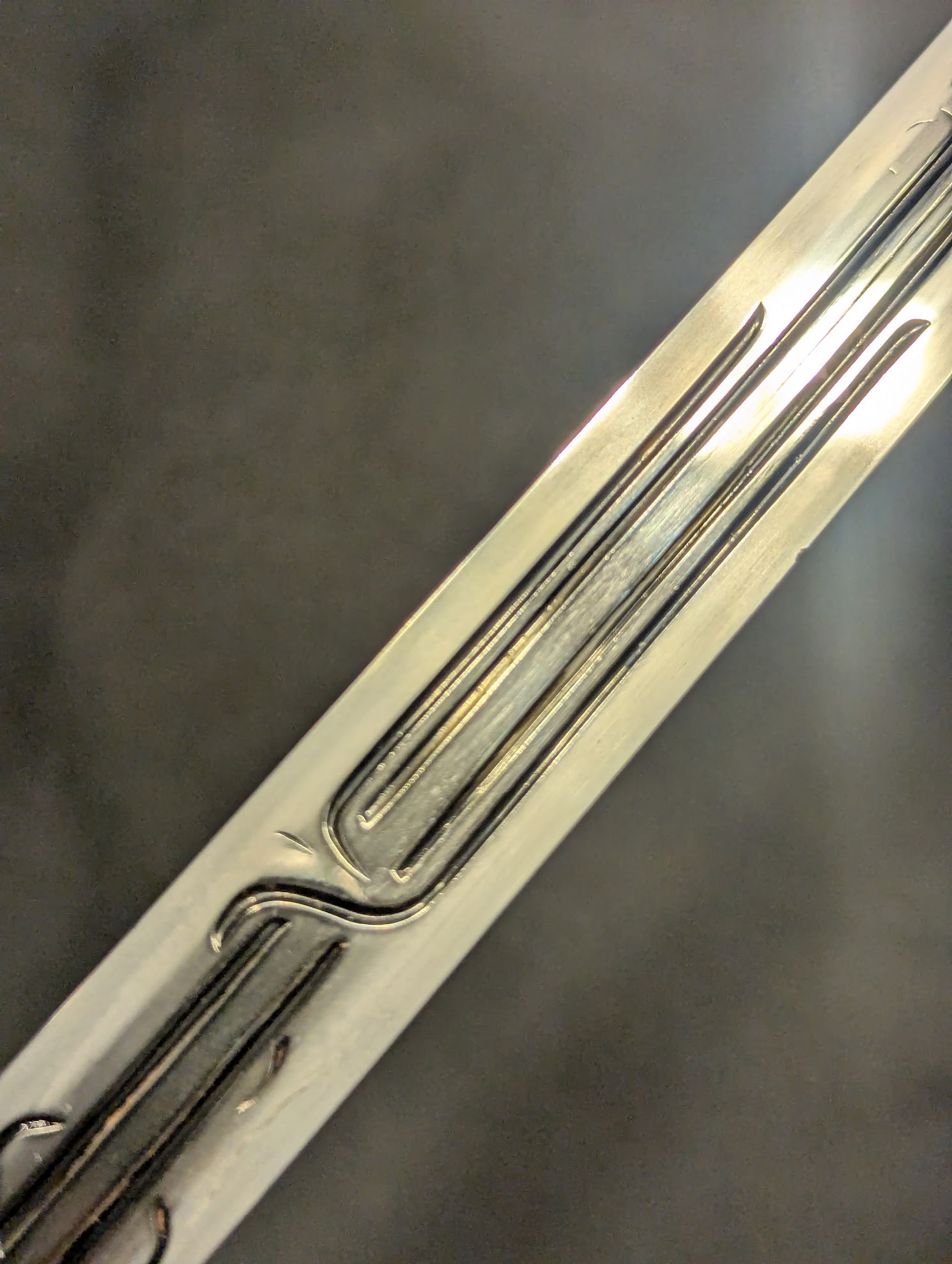
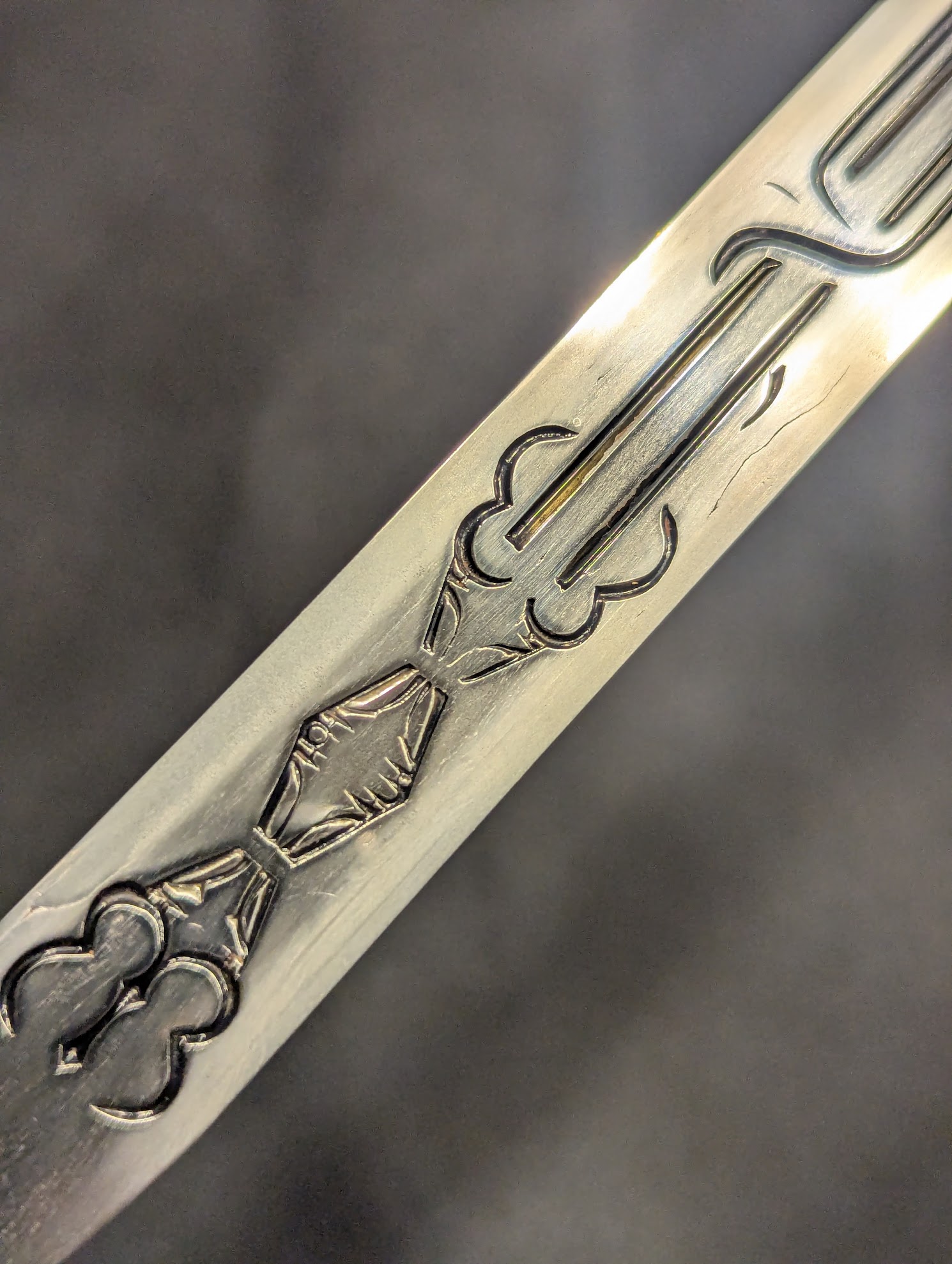

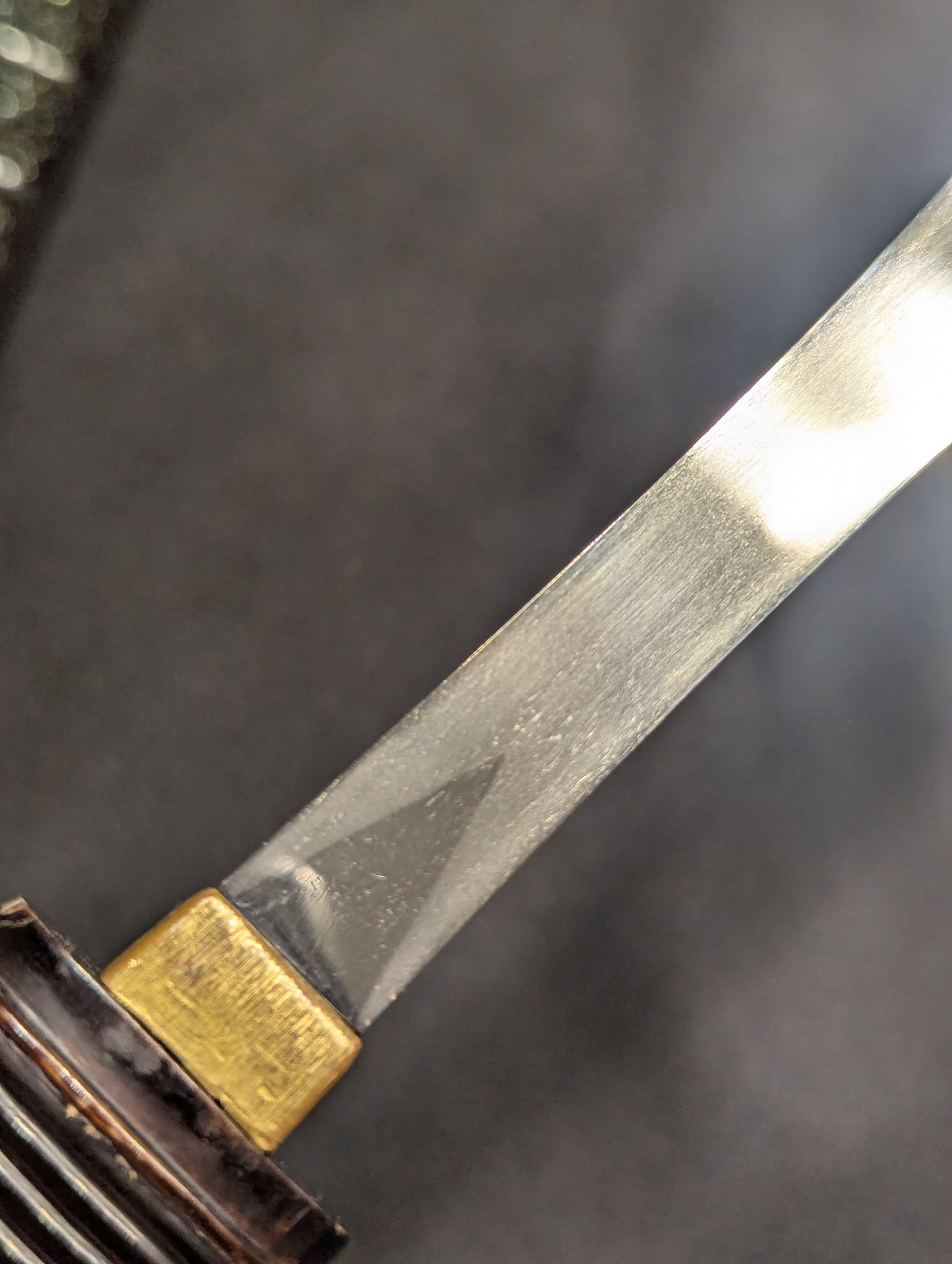
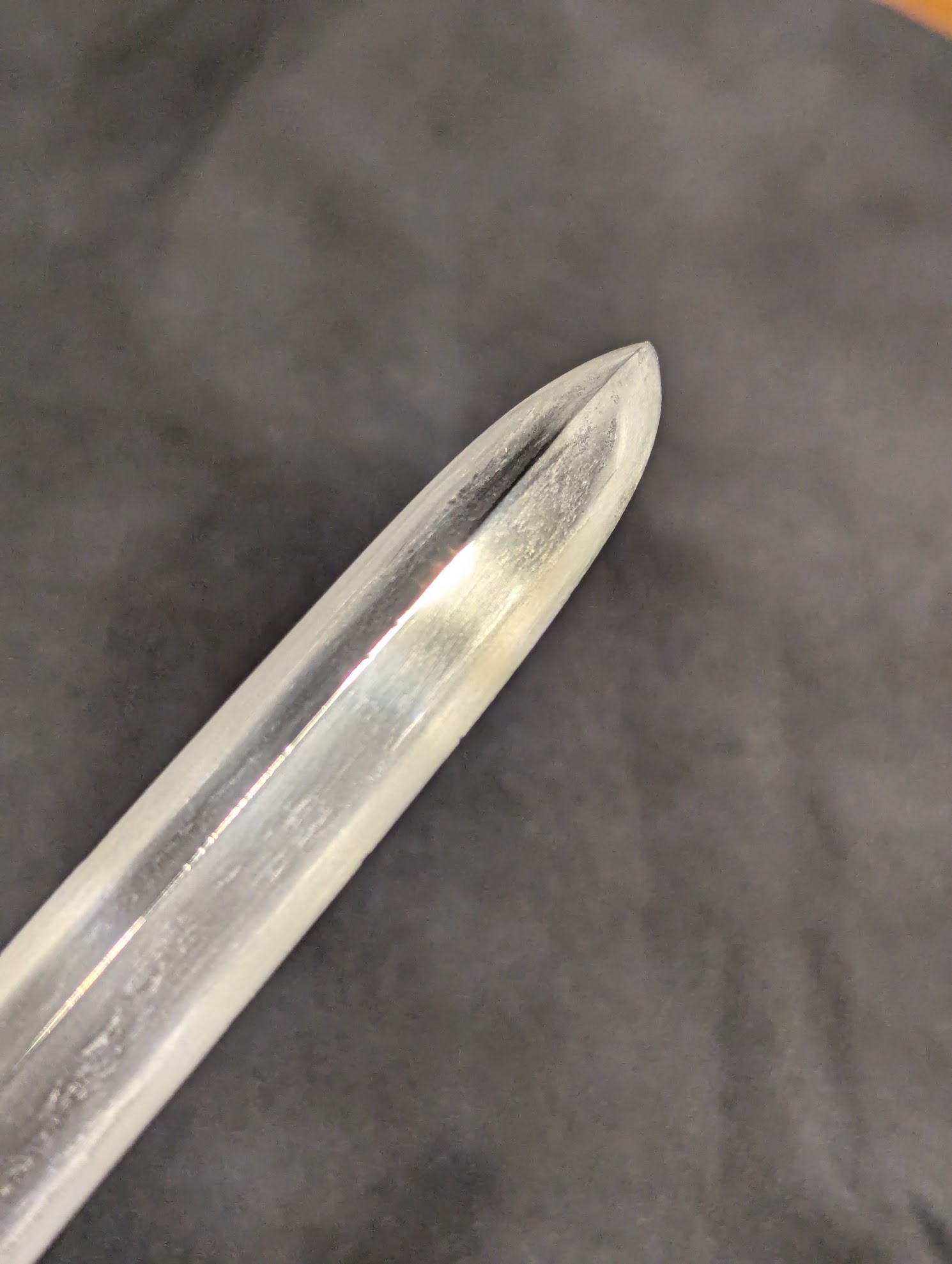
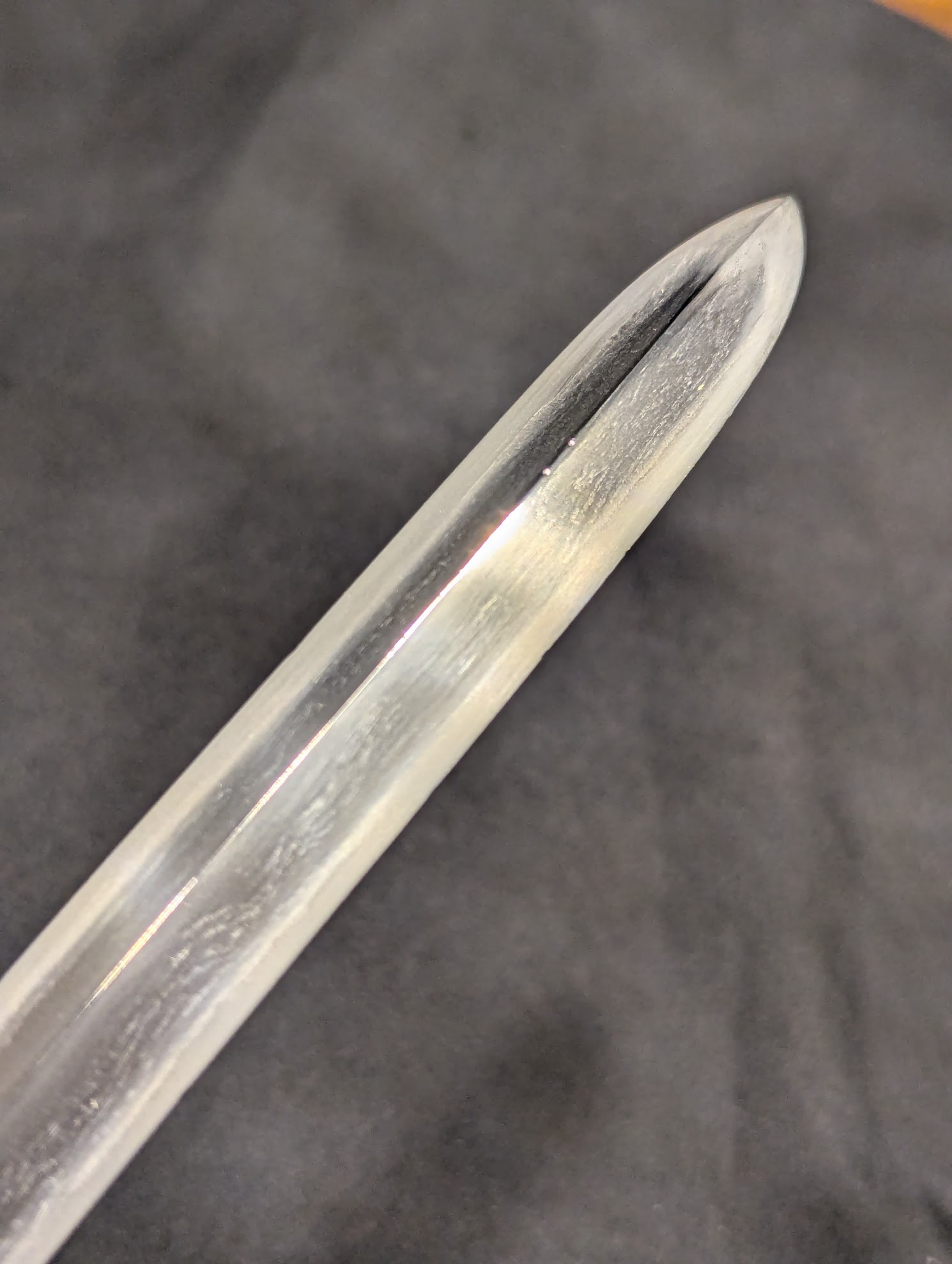
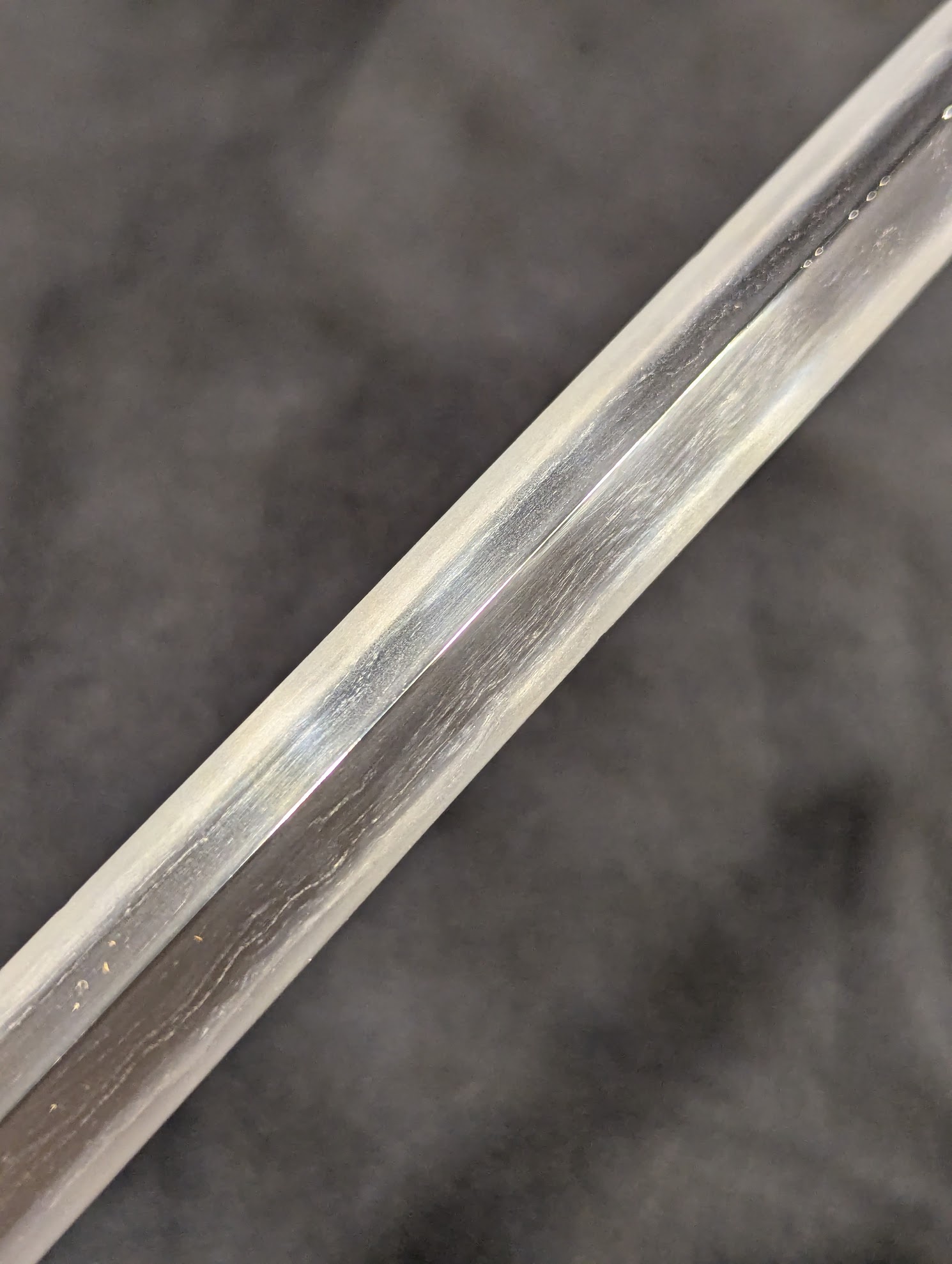
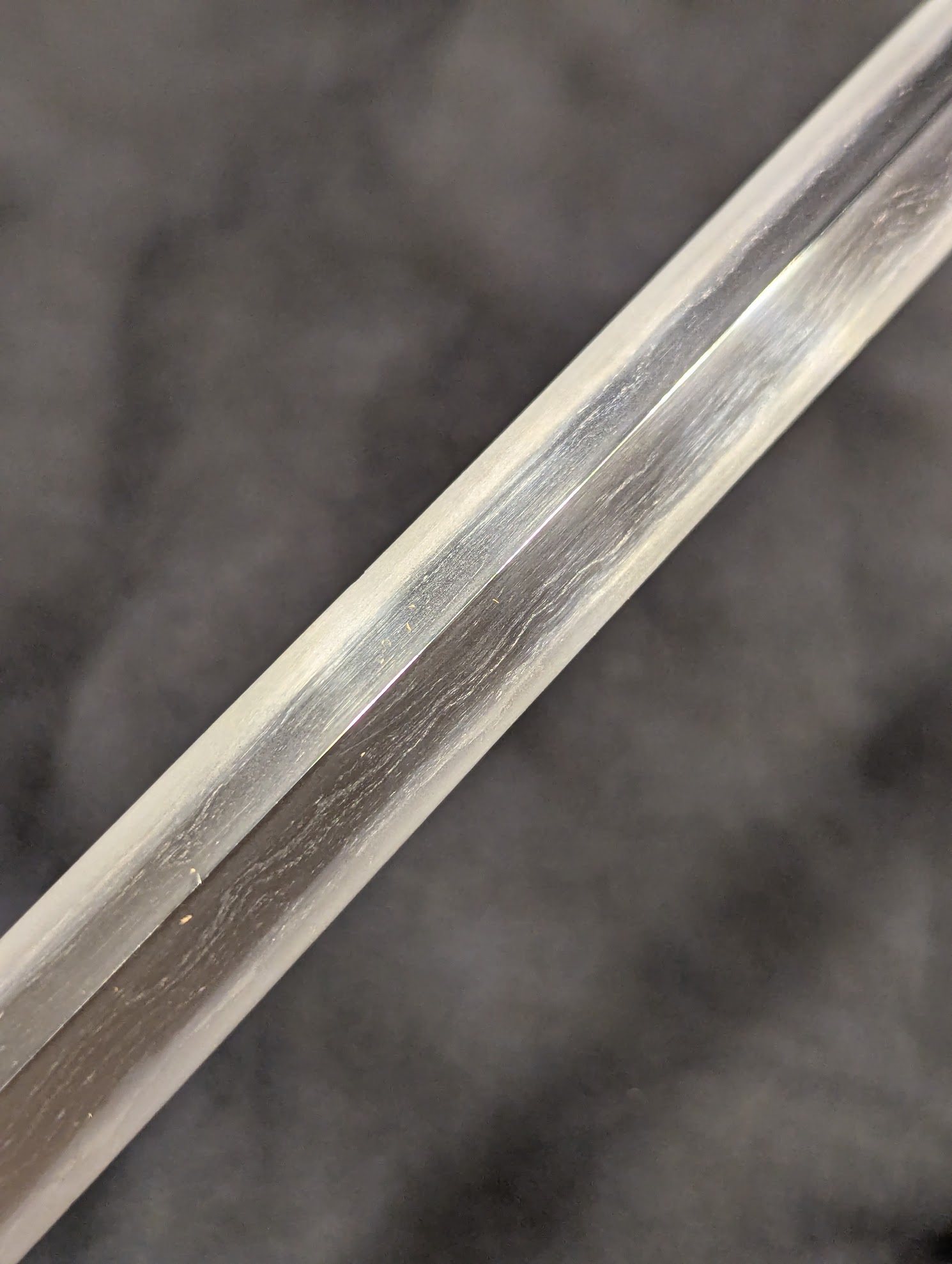
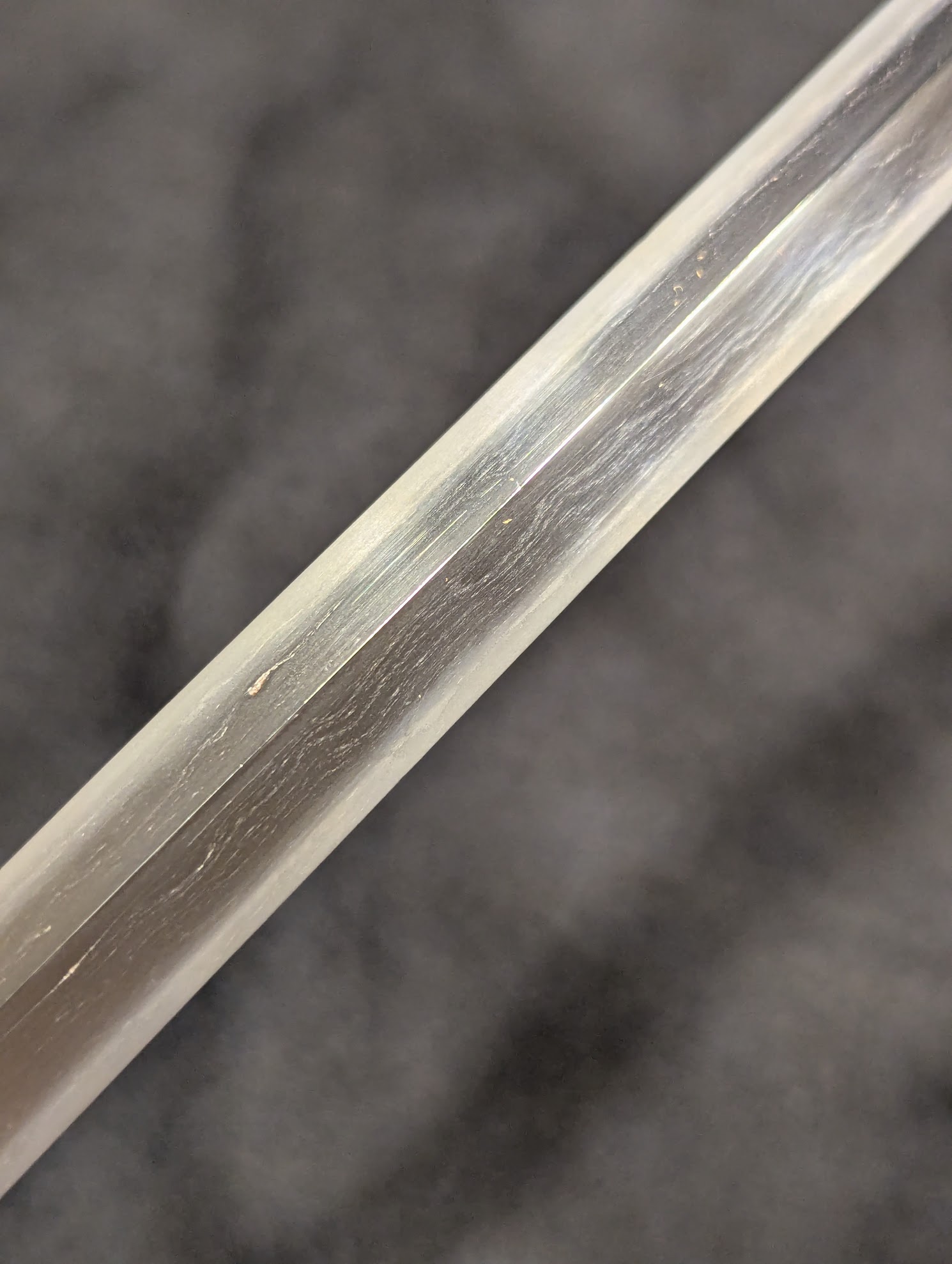

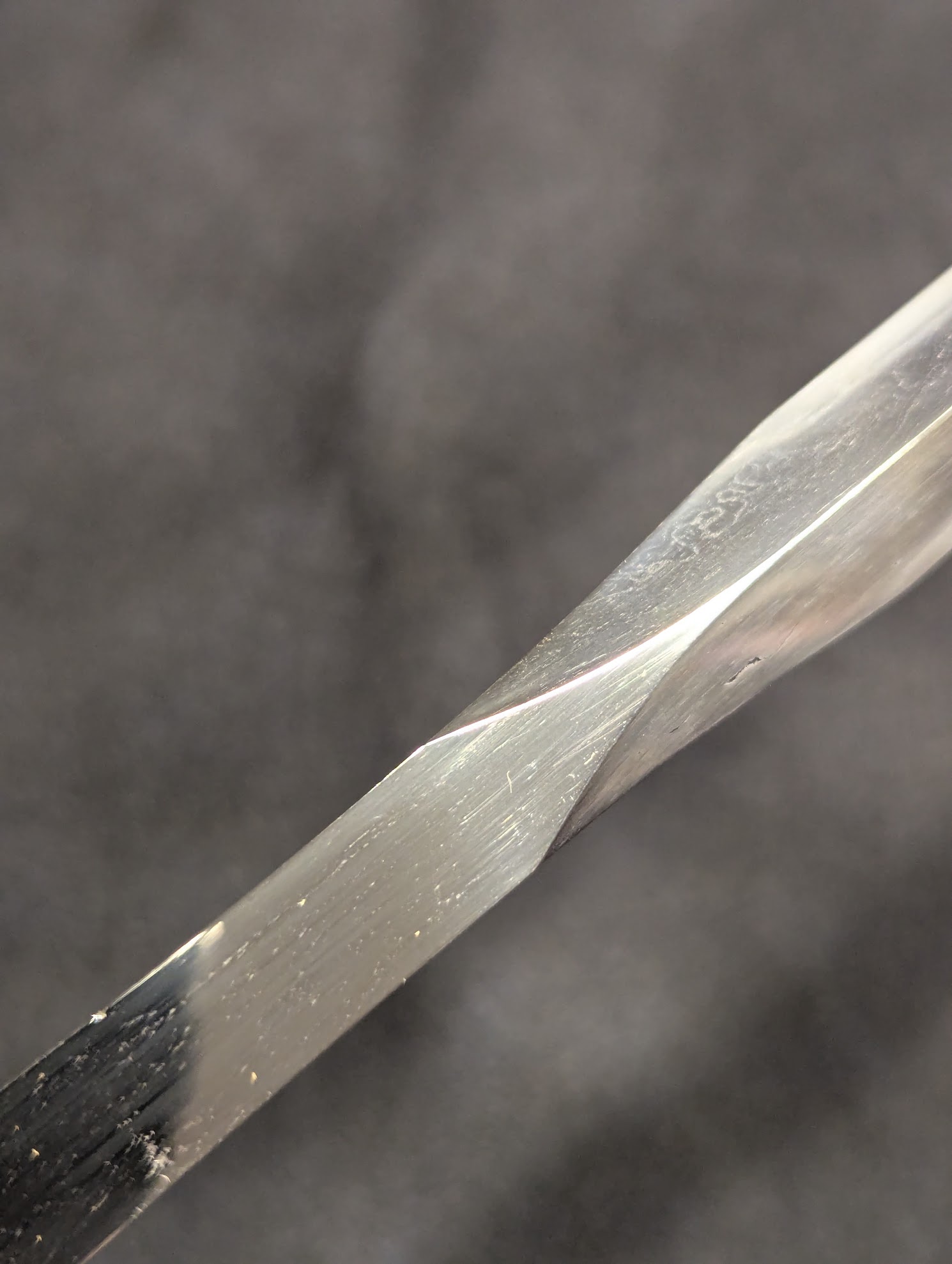
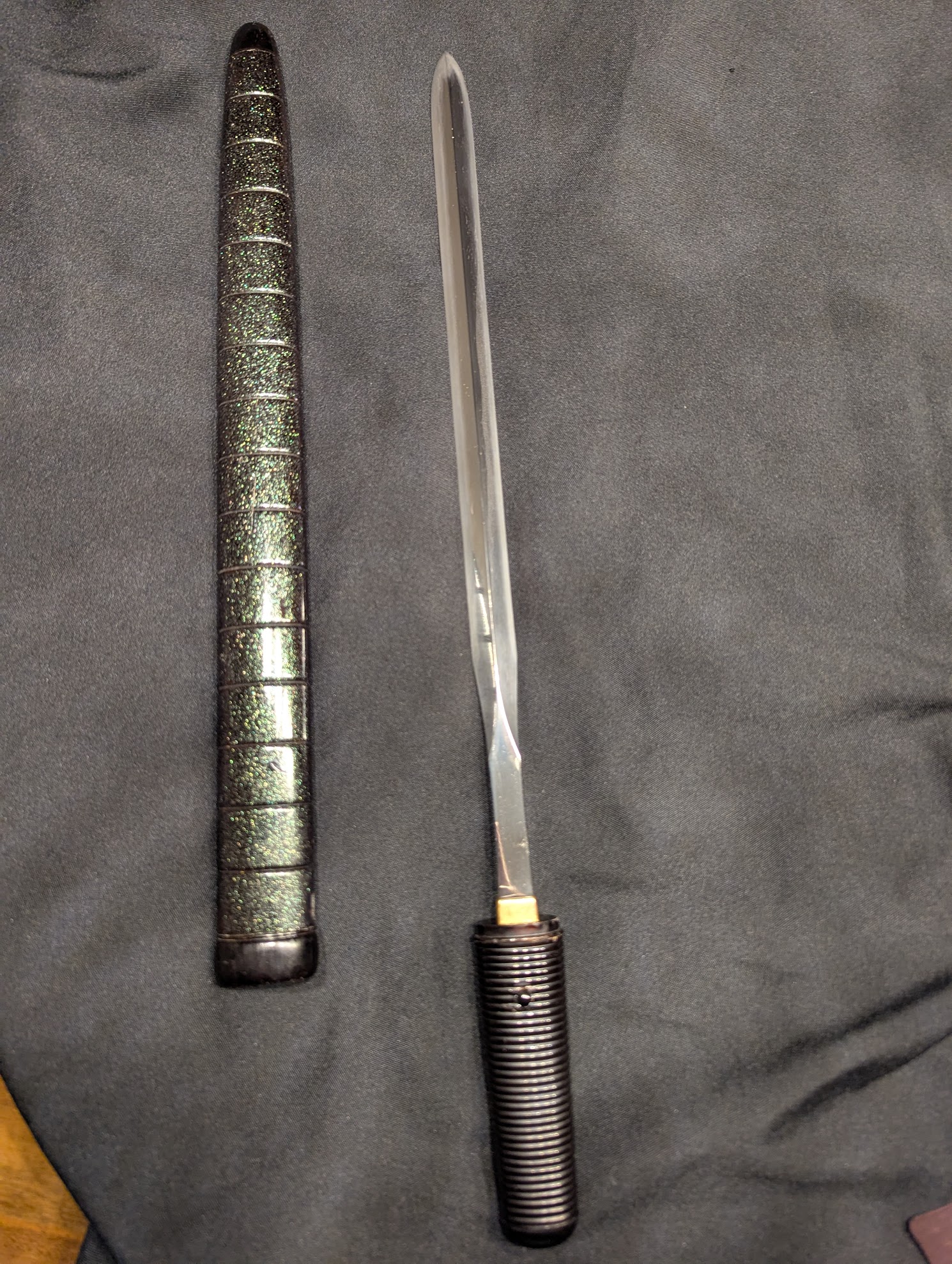
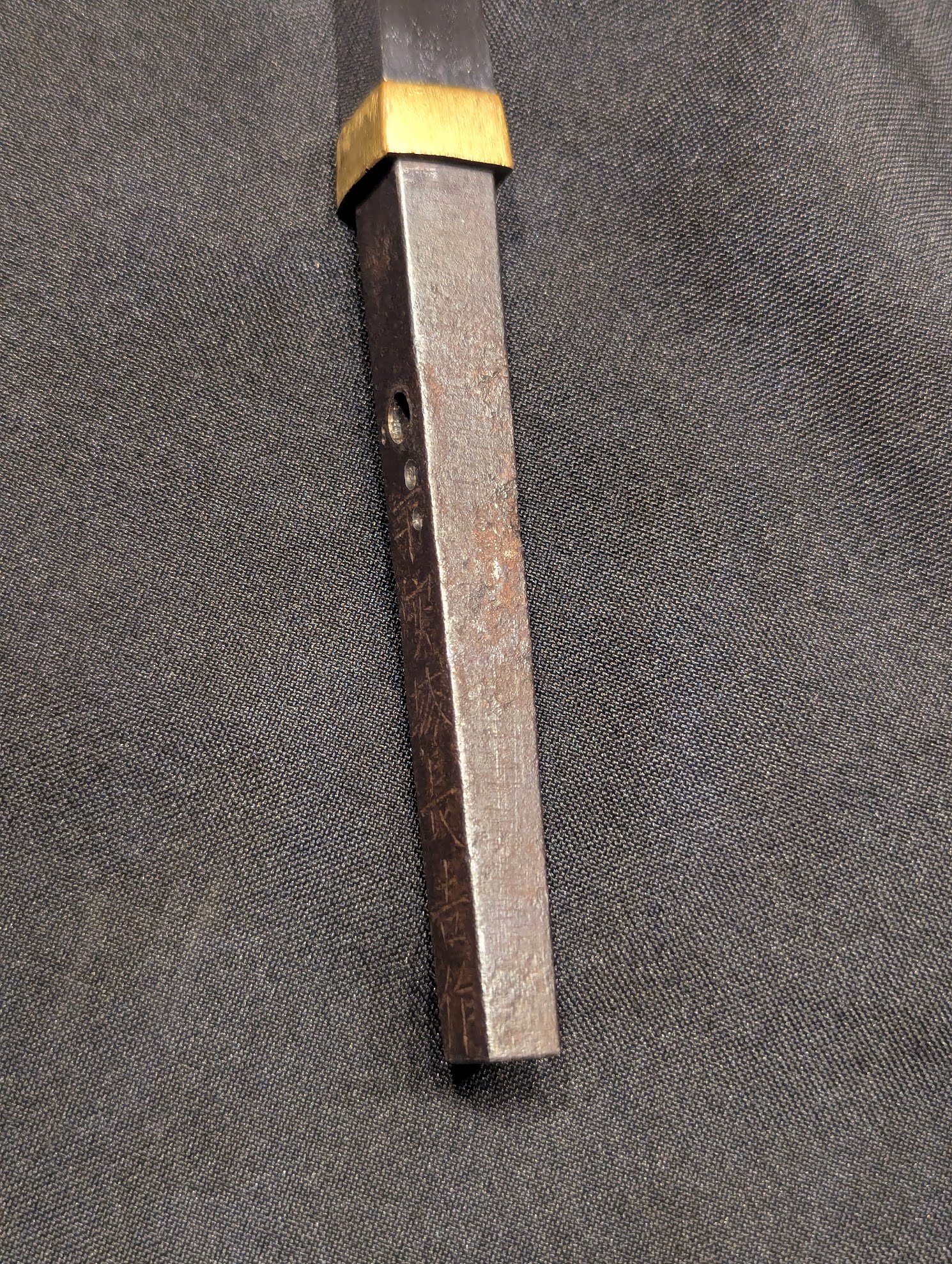

Project Info
Project Description
NAGAYOSHI (長吉), Eishō (永正, 1504-1521), Yamashiro – “Heianjō Nagayoshi saku” (平安城長吉作), “Nagayoshi” (長吉), “Sanjō Nagayoshi saku” (三条長吉作), “Heianjō Nagayoshi” (平安城長吉), “Heianjō Nagayoshi Sanshū no Kuni saku” (平安城長吉三州国作), “Yoshinori no ko Nagayoshi saku” (吉則子長吉作, “made by Nagayoshi, son of Yoshinori”), “Sōshū-jū Nagayoshi” (相州住長吉), we know date signatures from the third year of Bunki (文亀, 1503) to the 13th year of Eishō (1516), he mentions in his signatures that he was the son of Yoshinori whereas probably the Bunmei-era (文明, 1469-1487) Sanjō Yoshinori (三条吉則) is meant, during his early years he also worked in Mikawa, Ise, and in Sagami and there exists the tradition that whilst staying in Ise, he acted as master of Muramasa (村正), his horimono show an influence of the Odawara-Sōshū school, that means they are somewhat finer and more detailed as the horimono of earlier Heianjō works, relative many tantō are extant, they measure around 27.3 cm, have a wide mihaba, and some sakizori, or are with 18.2 to 21.2 cm in length somewhat smaller, have a narrow mihaba, and a thick kasane, the hamon is a suguha mixed with gunome-midare which gets wider towards their base or which tends to yahazu, this interpretation reminds of the Sengo school (千子), his ō-gunome-midare on the other hand reminds of the Odawara-Sōshū school, the tang tends to a tanagobara and has a ha-agari kurijiri, the yasurime are kiri and when he signed with a naga-mei that mentions the production site, he mostly applied katte-sagari yasurime, jō-saku

